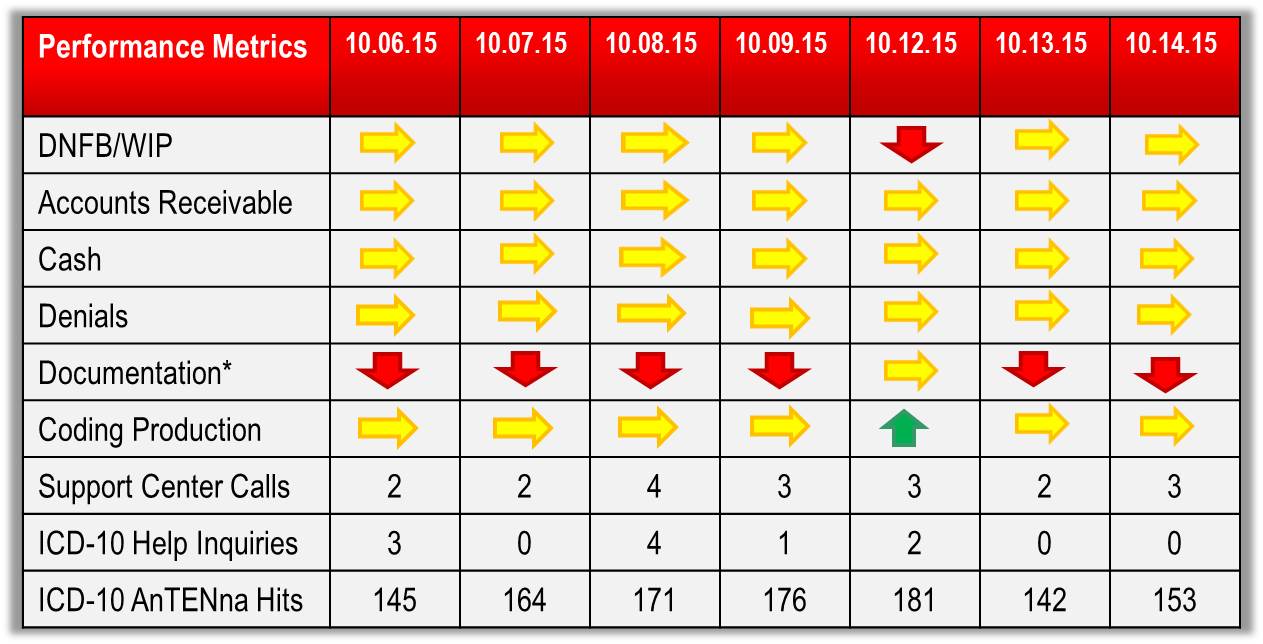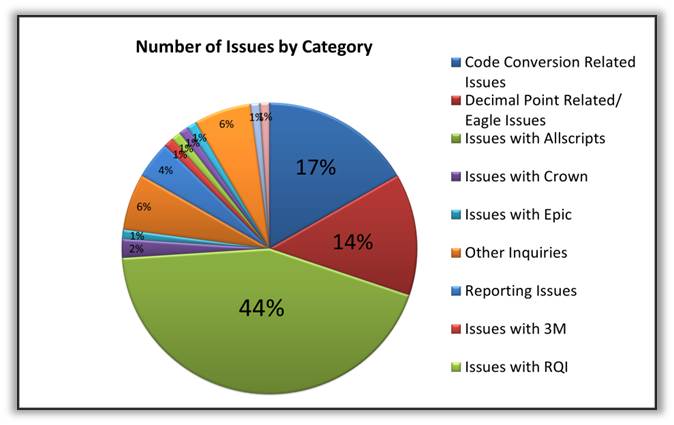SUMMARY OF EVENTS
Two weeks into the transition to ICD-10 and by all indications, NYP is demonstrating a fully stable financial and clinical operating environment. Aggressive tracking of billed and submitted October discharges and dates of service suggest that payment receipt is imminent and in line with historical time frames. Providers are embracing the prospect of documentation specificity, leveraging ICDx on more than 8 out of every 10 encounters to select and update health issues and problem lists and even inserting those diagnoses into patients’ assessment and plans. Clinical Data Coordinators from HIM in conjunction with Support Center staff continue to remedy the remaining ambulatory encounters for which only ICD-9 codes were provided. An ongoing summary of the project is listed below and the full presentation can be found here.
OVERALL IMPACT
Financial and operating metrics continue to remain stable as Support Center efforts prevent ICD-10 related issues from funneling back to the operation. Providers are demonstrating and uptick in their interaction with the new Allscripts documentation assistance tool, ICDx. Documentation Improvement specialists in HIM continue to generate increased volumes of provider inquiries in an effort to take advantage of the specificity available in ICD-10. Coding production has remained solid despite the transition to the new code set. Billing and claims submission production continues to be in line with historical volumes and time frames.
ITEMS TO BE RESOLVED
Efforts to remedy all outstanding and erroneously coded ambulatory encounters resulted in some future visits for recurring services being arrived in the Soarian scheduling system. IT has provided a go forward solution for Support Center staff to continue this effort without affecting scheduling status. The remaining cases related to the R4 to Eagle interface at LMH have been completed. Minor reporting glitches in EagleView were noted and either corrected or in the process of being so. IT is monitoring and quantifying a known pre-implementation item that would require dual coding for certain ambulatory encounters. Because dual coding was implemented prior to October 1, the exposure is expected to be minimal. The Allscripts team continues to research a known issue related to ICDx and the selection of behavioral health conditions and codes. An updated implementation issues log can be found here.
SUPPORT CENTER ACTIVITY
Staff received 3 phone calls and 0 e-mail inquiries while correcting approximately 200 additional outpatient encounters erroneously assigned ICD-9 codes. In total, the Support Center has logged 96 issues and 19 remain open. The ICD-10 AnTENna website recorded an additional 153 hits.
REMEMBER
- ICD-10 Diagnosis Codes are 3 – 7 characters, alpha-numeric, and ALWAYS begin with a letter
- ICD-10 is date of service/date of discharge sensitive
- DO NOT insert decimal points when entering ICD-10 diagnosis codes in Eagle
- Use ICDx to assist with documentation efforts in Sunrise Clinical Manager (SCM)
- Correct old health issues by clicking the health issue, selecting ‘update preferred mapping, select the ICD-10 code, and clicking ‘Accept”
HELP
For continued assistance and inquiry, please call the ICD-10 Support Center at 646-NYP-9-2-10 (646-697-9210), e-mail ICD-10Help@nyp.org, or visit the ICD-10 AnTENna website.

